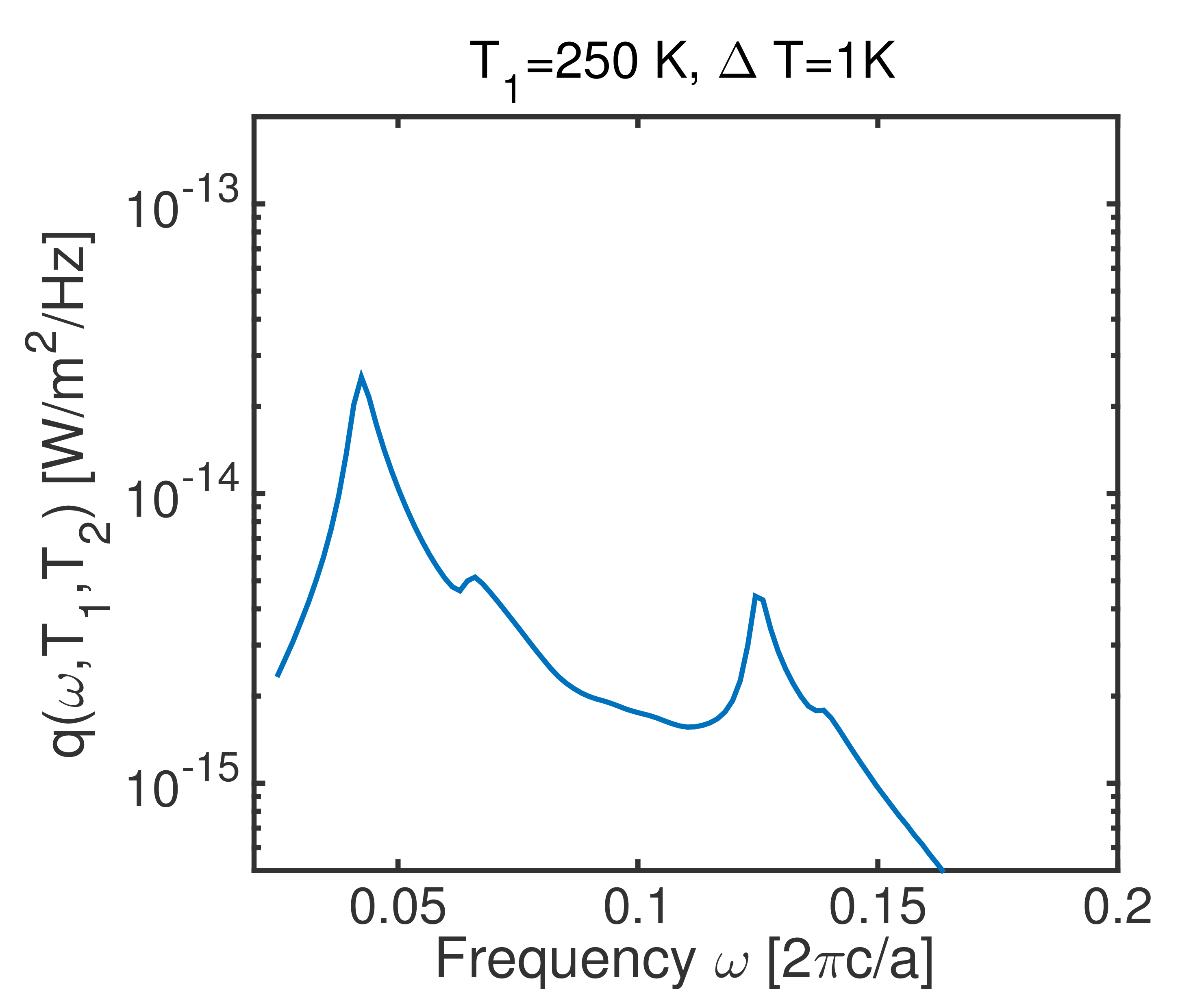Two Gratings Near-field
This code can produce the result in Fig. 3 (a) red curve in Phys. Rev. B 93, 155403, 2016.
s = SimulationGrating.new() s:SetLattice(1e-6); s:AddMaterial("Au", "fullGold.txt"); s:AddMaterial("Vacuum", "fullVacuum.txt"); s:AddLayer("BottomAir", 0, "Vacuum"); s:AddLayer("GoldSubstrateBottom", 0.5e-6, "Au"); s:AddLayer("GoldGratingBottom", 5e-6,"Au"); s:SetLayerPatternGrating("GoldGratingBottom", "Vacuum", 0.5e-6, 0.2e-6); s:AddLayer("VacGap", 1e-6, "Vacuum"); s:AddLayerCopy("GoldGratingTop", "GoldGratingBottom"); s:AddLayerCopy("GoldSubstrateTop", "GoldSubstrateBottom"); s:AddLayerCopy("TopAir", "BottomAir"); s:SetSourceLayer("GoldSubstrateBottom"); s:SetSourceLayer("GoldGratingBottom"); s:SetProbeLayer("VacGap"); s:OutputSysInfo(); s:OptPrintIntermediate(); s:SetThread(4); s:SetNumOfG(101); s:SetKxIntegralSym(500); s:SetKyIntegralSym(200, 5); s:InitSimulation(); s:IntegrateKxKy(); --print(string.format("%e", s:GetPhiAtKxKy(1, 0, 0))); phi = s:GetPhi(); omega = s:GetOmega(); for i = 1,s:GetNumOfOmega(), 1 do print(string.format("%e", omega[i]).."\t"..string.format("%e", phi[i])); end
The curve produced by this code is

The corresponding Python version is
from MESH import SimulationGrating s = SimulationGrating() s.SetLattice(1e-6) s.AddMaterial("Au", "fullGold.txt") s.AddMaterial("Vacuum", "fullVacuum.txt") s.AddLayer("BottomAir", 0, "Vacuum") s.AddLayer("GoldSubstrateBottom", 0.5e-6, "Au") s.AddLayer("GoldGratingBottom", 5e-6,"Au") s.SetLayerPatternGrating("GoldGratingBottom", "Vacuum", 0.5e-6, 0.2e-6) s.AddLayer("VacGap", 1e-6, "Vacuum") s.AddLayerCopy("GoldGratingTop", "GoldGratingBottom") s.AddLayerCopy("GoldSubstrateTop", "GoldSubstrateBottom") s.AddLayerCopy("TopAir", "BottomAir") s.SetSourceLayer("GoldSubstrateBottom") s.SetSourceLayer("GoldGratingBottom") s.SetProbeLayer("VacGap") s.OutputSysInfo() s.OptPrintIntermediate() s.SetThread(4) s.SetNumOfG(101) s.SetKxIntegralSym(500) s.SetKyIntegralSym(200, 5) s.InitSimulation() s.IntegrateKxKy()